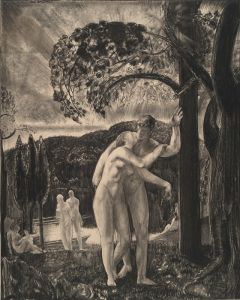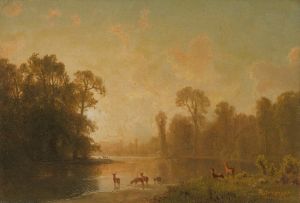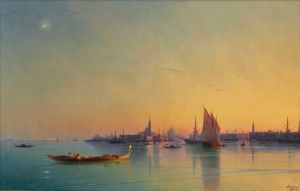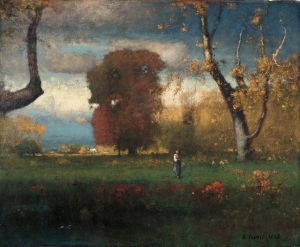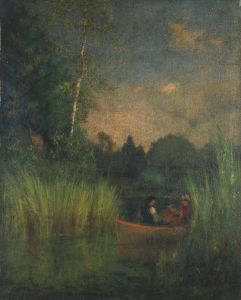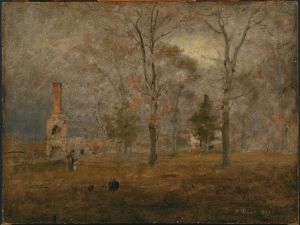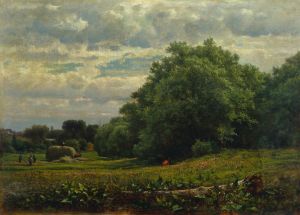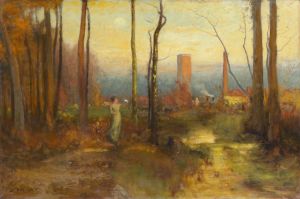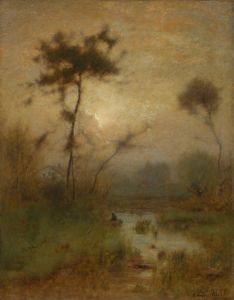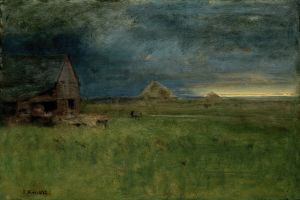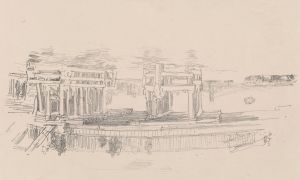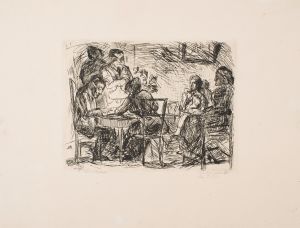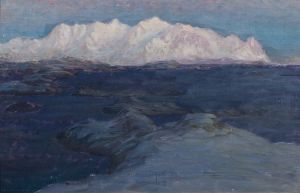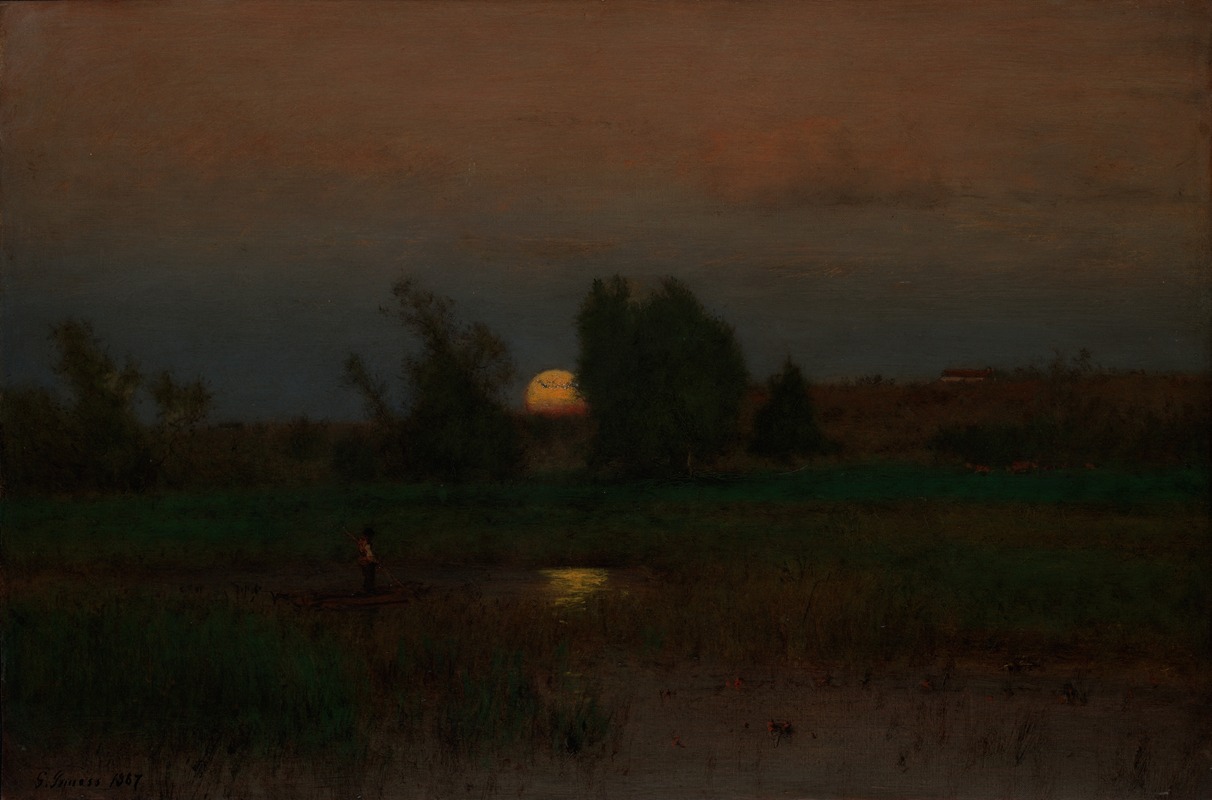
Moonrise
A hand-painted replica of George Inness’s masterpiece Moonrise, meticulously crafted by professional artists to capture the true essence of the original. Each piece is created with museum-quality canvas and rare mineral pigments, carefully painted by experienced artists with delicate brushstrokes and rich, layered colors to perfectly recreate the texture of the original artwork. Unlike machine-printed reproductions, this hand-painted version brings the painting to life, infused with the artist’s emotions and skill in every stroke. Whether for personal collection or home decoration, it instantly elevates the artistic atmosphere of any space.
"Moonrise" is a painting by the American landscape artist George Inness, created in 1865. Inness, who is often associated with the Hudson River School, is known for his evocative and atmospheric landscapes that reflect a deep spiritual and philosophical engagement with nature. "Moonrise" exemplifies his mature style, which is characterized by a more intimate and expressive approach to landscape painting compared to the detailed and grandiose works of his earlier years.
The painting depicts a tranquil rural scene at dusk, with the moon rising in the sky. The composition is marked by a harmonious balance between the natural elements, including trees, fields, and the sky. Inness uses a soft, diffused light to create a serene and contemplative mood, capturing the subtle transitions of light and color as day turns into night. The moon, partially obscured by clouds, casts a gentle glow over the landscape, enhancing the sense of calm and stillness.
Inness's technique in "Moonrise" involves loose brushwork and a muted color palette, which contribute to the painting's dreamlike quality. He employs a range of greens, browns, and blues to depict the foliage and sky, while the moonlight adds a touch of luminosity to the scene. This approach reflects Inness's interest in the tonalism movement, which emphasizes mood and atmosphere over precise detail.
The painting also reveals Inness's philosophical influences, particularly his interest in the ideas of Emanuel Swedenborg, a Swedish theologian and mystic. Swedenborg's writings on the spiritual dimension of the natural world resonated with Inness, who sought to convey a sense of the divine presence in his landscapes. "Moonrise" can be seen as an expression of this spiritual vision, inviting viewers to contemplate the beauty and mystery of the natural world.
"Moonrise" is part of the collection of the Museum of Fine Arts in Boston, where it continues to be appreciated for its artistic and emotional depth. The painting is a testament to Inness's ability to capture the ephemeral qualities of light and atmosphere, as well as his commitment to exploring the spiritual aspects of nature through his art.
Inness's work, including "Moonrise," has had a lasting impact on American landscape painting. His innovative use of color and light, along with his focus on mood and emotion, paved the way for later developments in American art, including the tonalism and impressionism movements. "Moonrise" remains a significant example of Inness's contribution to the tradition of landscape painting and his unique vision of the natural world.





